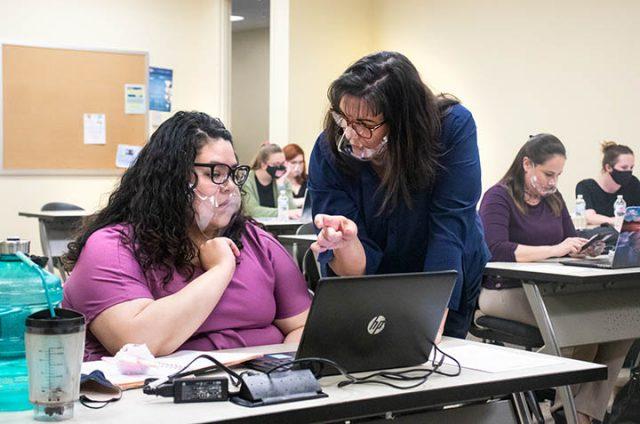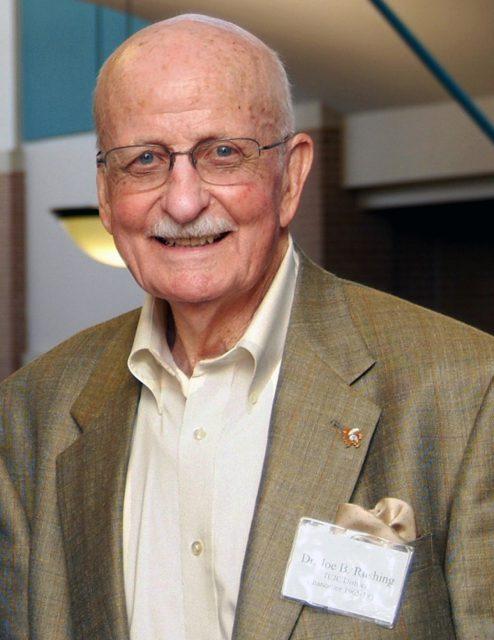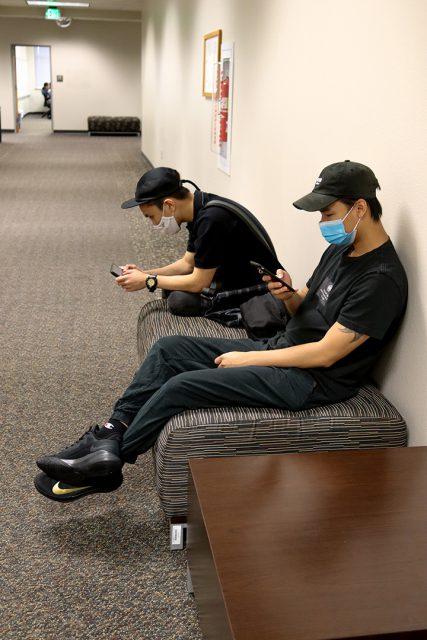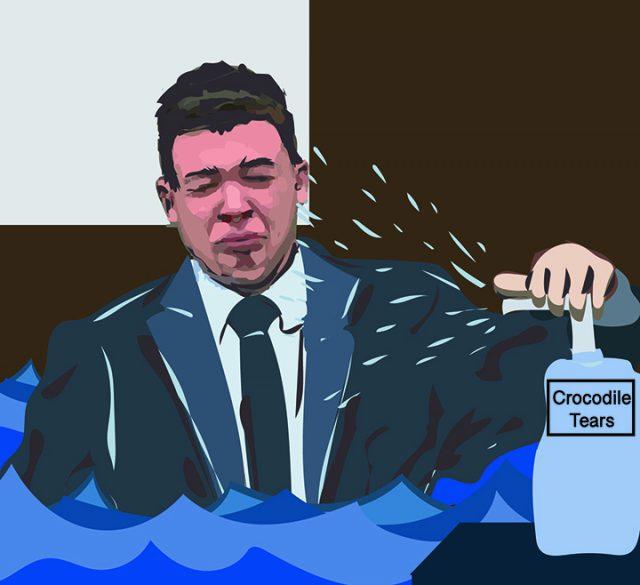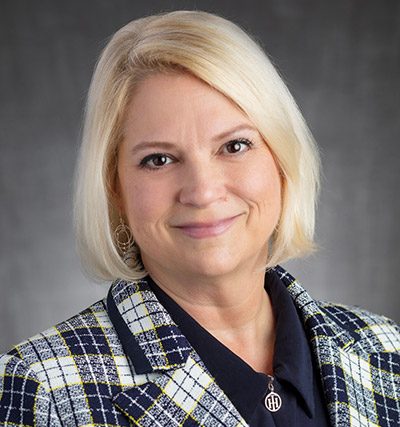ALYSON OLIVER
senior editor
American Sign Language interpreters must adjust to their environment and the linguistic needs of their clients constantly, ASL instructor Sammie Sheppard said.
COVID-19 has required that kind of adaptation on steroids, but it has demonstrated the strength and determination of students, faculty and staff involved in TCC’s ASL program, she said.
“ASL is a visual language, and to not have that kinesthetic visual way of learning in person was an obstacle for us across the board,” TR student Katie Beard said.
The program transitioned online last spring and remained virtual through the summer. This required a large amount of video work, ASL instructor Maureen Denner said.
This meant instructors could not be present to help students fix their hand positionings, for instance, Beard said. Additionally, internet issues and poor video quality posed problems of their own. And facial expressions, an important part of grammar in ASL, were also difficult to see.
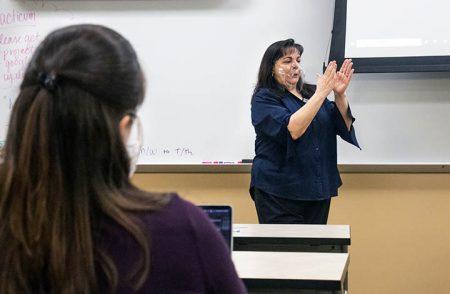
TR student Penny MacCornack watches as instructor Maureen Denner signs instructions to the class.
“Even though our instructors are doing a bang-up good job of getting things online, it’s still not the same when you have to learn a 3D language, and you only get 2D,” Sheppard said.
Throughout the process, they were blessed to be able to work alongside creative faculty and staff members, she said.
ASL moved back on campus during the fall since it is a specialized technical program.
Now in-person, participants in the program wear masks — often transparent, Sheppard said, so others can see their facial expressions — and go through their classes socially distanced.
“The students are much happier to have classes held again in person,” Beard said.
TCC’s ASL program is one out of four accredited two-year interpreting programs in the U.S., Denner said.“With our academics and our skill, what we give the students, that puts us on par with four-year universities,” she said.
Students in the program come from a variety of backgrounds, Sheppard said. Some want to take ASL as a foreign language. Some are first responders who wish to give their Deaf patients more quality care. Others are employees whose company pays for the program so they can communicate with fellow workers who are Deaf.
“You can come here as you are and we’ll start teaching you from the back down,” Sheppard said. “One of the most important things students learn in our program is about how to interact and show respect to the Deaf community.”
They are taught by Deaf faculty, she said, and can learn about the culture from those who are a part of it.

TR student Paige Brown signs a question to the instructor.
Students begin by taking ASL classes and become comfortable in basic conversational abilities before they have the chance to enter the interpreting program, Denner said. First, they must go through a screening to ensure they will be successful, as it is very intense, she said. As a part of the screening, they must have recommendations and undergo an interview with a member of the Deaf community.
“The process of actually interpreting is very different from the process of just learning a language,” Denner said. The goal is to prepare students for workbut also to get them ready for their state exams so they can work as certified interpreters, Denner said.
After completing the program, some students go to four-year universities, and others continue to grad school, she said. Many go on to work as interpreters in the Deaf community.

TR ASL instructor Cheryl Sohns signs to her students during one of the Zoom
sections. The sound is turned off to imitate the quiet classroom.
ASL program switches to online during pandemic
The shelter-in-place order due to COVID19 forced all TCC courses to transition online, but one course that had never before been offered this way is American Sign Language.
























